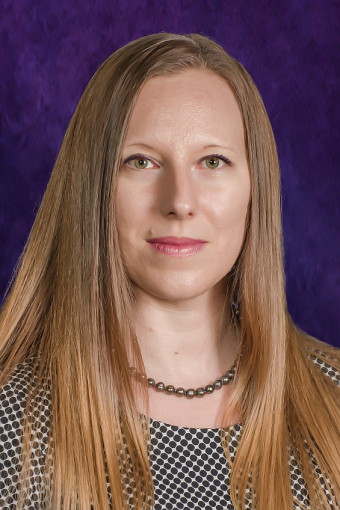
Date:
Location:
Title:
abstract
One sentence summary: Quantum mechanical simulations are combined with genetic algorithm optimization and machine learning to predict the structure of molecular crystals and to discover molecular crystals with enhanced electronic and optical properties for applications in organic electronic and photovoltaic devices.
Molecular crystals are bound by dispersion (van der Waals) interactions, whose weak nature generates potential energy landscapes with many local minima that may be extremely close in energy. This often results in polymorphism, the crystallization of the same molecule in several different structures. Crystal structure may profoundly influence the physical and chemical properties, including the electronic and optical properties relevant for device applications. We perform large scale quantum mechanical simulations to predict the structure of molecular crystals and discover molecular crystals with enhanced electronic and optical properties.
To perform structure search, we develop the genetic algorithm (GA) code, GAtor. GAs rely on the evolutionary principle of survival of the fittest to perform global optimization. GAtor offers a variety of crossover and mutation operators, specifically designed for molecular crystals, to create offspring by combining/ modifying the structural genes of parent structures. GAtor achieves massive parallelization by spawning several GA replicas that run in parallel and only interact via a shared population of structures. Multimodal optimization is achieved by using evolutionary niching to enable the simultaneous evolution of several subpopulations. Machine learning is used for dynamic clustering of the population. A cluster-based fitness function is then employed to steer the GA to under-sampled low-energy regions of the potential energy landscape. Advantageously, the GA fitness function may be any property or combination of properties, not necessarily the energy. We rely on this to search for potential polymorphic structures with enhanced charge carrier mobility.
An emerging application of molecular crystals is singlet fission (SF), the down-conversion of one photogenerated singlet exciton into two triplet excitons. SF has the potential to significantly increase the efficiency of organic photovoltaics beyond the Shockley-Queisser limit by harvesting two charge carriers from one photon. However, the realization of SF-based solar cells is hindered by the dearth of suitable materials. Using many-body perturbation theory in the GW approximation and Bethe-Salpeter equation (BSE), we have elucidated the effect of crystal packing on the excitonic properties of molecular crystals. To assess the likelihood of new materials to exhibit SF, we have proposed a two-dimensional descriptor based on the thermodynamic driving force for SF and the degree of singlet exciton charge transfer character. To evaluate the latter we have developed the double-Bader analysis method for exciton wave-functions from BSE calculations. We have identified several promising candidates for intermolecular SF in the solid state including monoclinic rubrene, quaterrylene, and phenylated pentacene derivatives.
bio
Noa Marom received a B.A. in Physics and a B.S. in Materials Engineering, both Cum Laude, from the Technion- Israel Institute of Technology in 2003. From 2002 to 2004 she worked as an Application Engineer in the Process Development and Control Division of Applied Materials. In 2010 she received a Ph.D. in Chemistry from the Weizmann Institute of Science. She was awarded the Shimon Reich Memorial Prize of Excellence for her thesis. She then pursued postdoctoral research at the Institute for Computational Engineering and Sciences (ICES) at the University of Texas at Austin. From 2013 to 2016 she was an Assistant Professor in the Physics and Engineering Physics (PEP) Department at Tulane University. In 2016 she joined the Materials Science and Engineering Department at Carnegie Mellon University as an Assistant Professor. She holds courtesy appointments in the Department of Chemistry and the Department of Physics. She is a member of the Pittsburgh Quantum Institute (PQI) and an affiliate of the Scott Institute for Energy Innovation. She has recently received the NSF CAREER, DOE INCITE (2017,2018), and Charles E. Kaufman Young Investigator awards. In 2018 she was awarded the IUPAP Young Scientist Prize in Computational Physics.
Hosted by Chris Palmstrom. Download event flyer.



